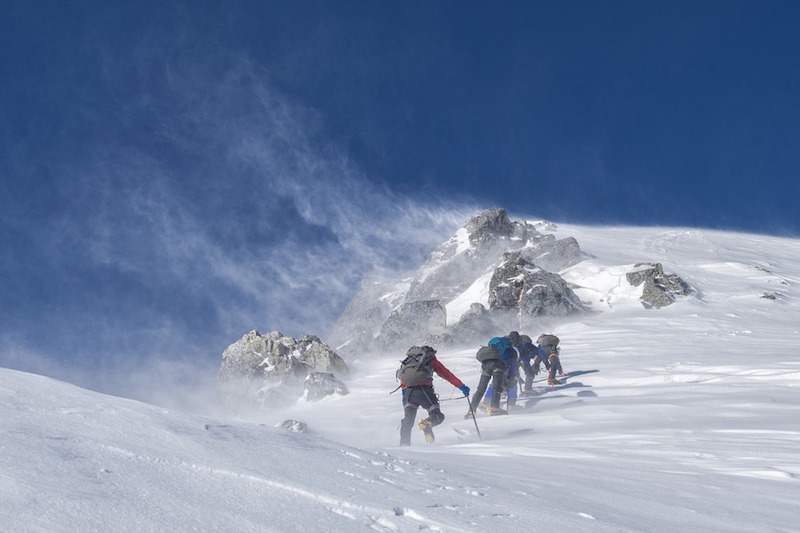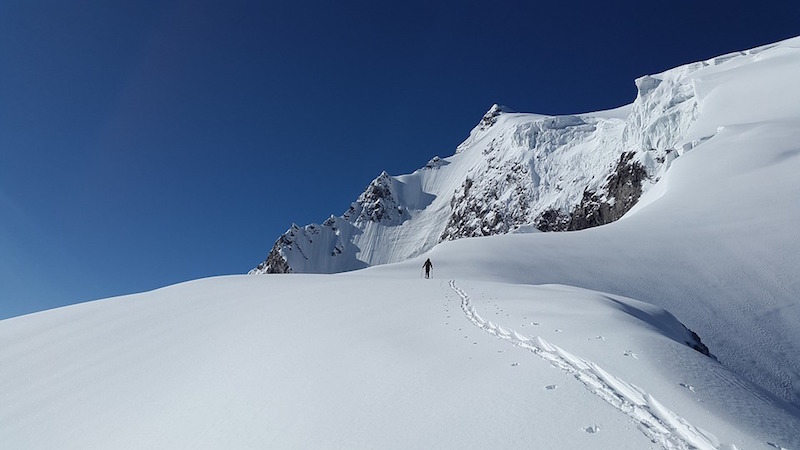Winter transforms Britain’s highest mountains, with peaks like Snowdon and Ben Nevis offering fantastic scenery and inspirational routes when covered in a dusting of snow. But there are certain risks you need to be aware of when climbing them in this season. Here’s how to avoid one of the biggest dangers of all – avalanches.
For an avalanche to take place, several key ingredients need to be present; a layer of snow or a smooth ground surface to slide over, a slope for it to slide on and something to set it off.
Avalanches: The basics
Snowpack
Throughout winter, snow gathers in layers. Some layers are soft and unsupportive while others are hard and slippy. Take a quick look at the snow and see if one layer slides easily on top of another. Remember, the ground is essentially the bottom layer and the snow can sometimes slip on this surface. Think about what the whole snowpack is sat on. Is it grippy vegetation and boulders or is it slippery grass, smooth rock slabs or ice? Once winter is underway, there will normally be several layers within any given snowpack, but this doesn’t mean too much unless we consider the following ingredients.

Gradient
The steepness of the slope is of vital importance. Fairly flat, and the snow won’t slide. Too steep, and the snow slides off before it gets a chance to build up. Avalanches generally happen between 20 and 50 degrees, though they are most common at around 35 degrees. Try to “get your eye in” for judging how a steep a slope is. Most people think things are steeper than they are. Also remember that while you may be walking on a flat snowfield, there could be steeper avalanche prone slopes above you.
Trigger – something to set it off
Avalanches can be caused by a variety of triggers. It could be the volume of snow, a rise in temperature, anything that makes the slippery layers more prone to sliding, or something that makes the top layer heavier (like us). The greater the load, the more likely the trigger. The majority of victims trigger their own avalanches and there really is no such thing as safety in numbers here. Finally, remember that you may not be the only potential trigger and there could be people above you.
Avalanches: Be clever
Knowing why people put themselves in these situations can help you learn from their mistakes. So why do people venture into avalanche-prone terrain?
Commitment: “I’ve driven all this way, walked for hours, and if I can just get across that slope we’ll be safe on the ridge.”
Scarcity: “This is my only weekend of the season, I may not get another chance.”
Familiarity: “It’s really gnarly today, let’s just go back to that route we did last time – that was fine.”
Social pressure: “Those guys have just come down that way – it must be fine.”

Remember, avalanches happen as randomly and as frequently as nature desires and it only becomes a problem for us if we choose to be there at the same time. Be honest about the risk you are taking. If you think things might be OK, but you’re not sure, consider this:
You’re standing beside a busy road thinking of crossing. If you’re sure it’s going to be okay – go right ahead. If you think it’s 50/50 you would probably think again and look for a more suitable place and time to cross. Look for another objective!
That’s the beauty of winter mountaineering – there’s almost always a safer plan out there somewhere.
Who’s writing?
Carlo Forte is the chief instructor at Plas y Brenin. He holds the Mountaineering Instructor Certificate, the highest award in the UK for mountaineering instruction, and has many years’ experience of instructing and guiding in the Scottish winter. Head to Plas y Brenin’s website to find out about the company’s mountain skills courses.



